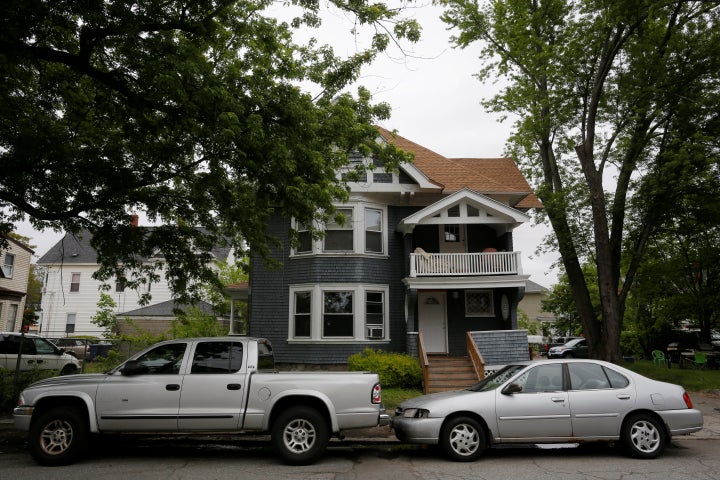
HIV clusters among people who inject drugs are back, this time in Massachusetts, despite its reputation as the nation’s gold standard for public health and health care access.
Lawrence and Lowell, neighboring cities near the New Hampshire border, reported spikes in new HIV infections last year among people who inject drugs, with 52 new cases in the area last year compared with 32 the year before.
While 52 new HIV cases might not sound dramatic, health experts fear that new diagnoses will explode.
Local health officials suspect the virus is largely being spread through needle sharing, and they have called on the U.S. Centers for Disease Control and Prevention to investigate. The CDC’s disease detectives are expected to arrive later this month to begin field interviews and try to determine the source of the HIV clusters.
Fentanyl use across New England is suspected as a major cause, according to several health experts, including health professionals in Lawrence and Lowell and a professor who does field work in opioid hot spots nationally.
Fentanyl, a synthetic opioid with a deadly potency, 30 to 50 times more powerful than heroin, has hit the region hard in part because of the prevalence of white powder heroin, which looks identical. Dealers in the area cut their heroin with the cheaper synthetic to boost profits, according to epidemiologists. As a result, New Hampshire and Massachusetts rank first and second, respectively, in per capita fentanyl deaths. It kills more people than heroin overdoses in the two states, according to the Boston Globe.
Fentanyl’s half-life is shorter than heroin’s, which means that the drug triggers a more intense high but also leaves the body more quickly. People who inject drugs need to inject fentanyl more often to avoid withdrawal symptoms. That can mean injecting fentanyl eight or more times a day instead of the two to four times a heroin addict might inject daily, according to experts in reducing the harm caused by drug use.
More injections means a greater likelihood that people will share needles, according to Dr. Peter Friedmann, associate dean for research at the University of Massachusetts Medical School and chief research officer at the nonprofit Baystate Health.
“Having to inject more times a day to stave off withdrawal makes syringe needles get dull, and in the absence of an expansion of syringe access, more syringe sharing is inevitable,” Friedmann said.

Dan Ciccarone, professor of family and community medicine at the University of California, San Francisco, hopes the CDC investigation will include a survey of drug users living in Lawrence and Lowell to determine the scope of the opioid use. “We’re still in this phase of just counting dead bodies,” he said.
After public health professionals noted the rise in new HIV infections last year, Lowell started a needle exchange with the support of a $135,000 grant from the University of Baltimore. The exchange has been operating for only about a year, and limited hours of operation mean clean needles still aren’t getting to all the people who need them.
In Lawrence, most of the new infections are among people younger than 40 who didn’t witness the HIV/AIDS crisis of the 1980s and 1990s, according to local health experts. Not knowing the lessons of that crisis, they may be more likely to share needles and less likely to seek medical treatment, which could create an uncounted community of individuals with undiagnosed HIV who aren’t being treated and who are transmitting the virus.
There’s also a dearth of substance use treatment options nationally, particularly medications, such as suboxone and buprenorphine, which have been shown to be highly successful.
Like most of the country, Massachusetts doesn’t have enough clinicians who are trained to prescribe medication-assisted treatment (MAT) for all the patients who want it. A clinician must have a MAT certification to prescribe the drugs.
“We joke, as a first-day intern on the ward, you can prescribe a blood thinner to an outpatient,” said Dr. Alysse Wurcel, an attending infectious disease physician at Tufts Medical Center. While blood thinners can be lifesaving, side effects include heavy bleeding, which can be fatal.
“Suboxone, which has limited side effects, you can’t prescribe,” Wurcel said.
Other communities that have had that risky combination of limited clean needle access and inadequate treatment options have also suffered from infectious disease outbreaks, including a 2015 HIV outbreak in Scott County, Indiana.
Under the leadership of then-Gov. Mike Pence, Indiana suffered the worst HIV outbreak in state history. During the months that Pence delayed approving a needle exchange in Scott County, 20 new cases of HIV were being diagnosed each week.
“Scott County is an extreme case,” Ciccarone said of the 23,000-person community where HIV spread rapidly through the use of dirty needles.
Lawrence and Lowell are small post-industrial cities with populations more than three times that of Scott County. “Think about all across America, the dozens of places like Lawrence and Lowell,” Ciccarone said.
Even more unsettling is that Massachusetts has a public health system widely regarded as the best in the country. The state has also mounted a vigorous response to the opioid epidemic, including opening needle exchanges, making the drug-overdose reversal medication naloxone widely available and pouring money into substance abuse treatment.
But even the best public health system in the country has weaknesses. And if an outbreak can happen in Massachusetts, it can happen anywhere.
“We’re not West Virginia and we’re not rural Maine,” Wurcel said. “We have exchanges and a good public health system. That’s what makes it really scary.”
If the outbreak expands, other states and cities with a high rate of injected-drug use should interpret Lawrence’s and Lowell’s HIV rise as a warning sign.
CORRECTION: A previous version of this story misidentified Dr. Alysse Wurcel’s professional affiliation. Dr. Wurcel is an attending infectious disease physician at Tufts Medical Center, not Tufts University School of Medicine.
